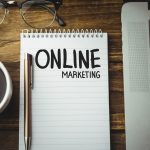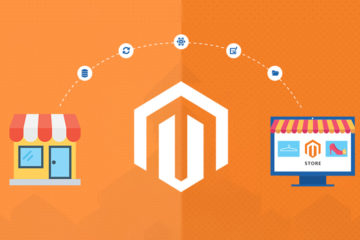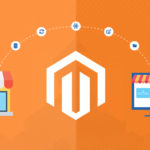Modern eCommerce enterprises require tools to help them bloom. However, the plethora of choices can…
eCommerce email marketing grows, to be one of the most compelling tools in digital marketing, it’s quick, assessable, and accessible. However, if you’re accustomed to email design, you recognize that each email client contributes to content differently. Even though some of the email clients are well-versed with the most advanced technology, many are still ages behind the best practices of conventional website design.
As inboxes have become overcrowded, the attention span has also decreased, businesses face many marketing challenges. Do you want to improve your open and click-through rates? If yes, then you must be wondering how?
A well-designed email is essential for driving conversions. Due to which sticking to the following, best practices will make sure your emails render promptly and correctly across all platforms and devices.
Some of the best email practices:
- Keep It at 600 Pixels
- Simple is Eternally Better
- Build a Visual Hierarchy
- Stick with Custom Fonts
- Use Constant Branding
- Personalize Wherever Possible
- Test and Improve
1. Keep It at 600 Pixels
The ideal width of an email is 600 pixels. This recommendation has endured the test of time as various browser-based email clients need added interface space and don’t provide a full-screen viewing experience.
We strongly suggest creating vertical designs as opposed to horizontal ones. Although horizontal layouts can add visual interest, these designs usually encounter formatting issues when they respond to the sizes of the mobile device.
Overall, don’t forget that your emails are liable to be opened in different devices by various clients. You can proactively dodge formatting issues that may arise if you create from the perspective of a mobile device.
2. Simple is Eternally Better
As we all know the attention span of an average adult is 8 seconds only. Due to which it’s necessary to make easy to read and eye-catching emails.
Including imagery or video is an excellent technique to condense content and convey your message visually. It’s also essential to provide content room to breathe and improve readability. Text embellishments like short paragraphs, bullet points, and white space will help you achieve this.
3. Build a Visual Hierarchy
An exceptional and effective email layout guides users to perform the coveted action. Like our graphic designers create a system that facilitates this action.
To achieve this goal, we advise building a visual hierarchy to communicate what sections of your email are the most prominent. We usually practice the “squint test” to instantly evaluate the parts of the design that carries visual mass.
Although each email varies from one another, we’ve found a repeatable model which can help you through:
- Logo
- Compelling Image
- Call to Action
- Influential Headline
- Supporting Text
- Additional Call to Action
Don’t forget that the goal of every email and its audience will be varied. We boost you to try-and-test with a hierarchy that serves for your distinct needs.
Nevertheless, keep in mind that your users should be capable of scanning quickly through your content and comprehend what components are the most essential. Eventually, this will help them sail through your call to action instantly and help them convert.
4. Stick with System Fonts
Even though we prefer the customization and versatility offered by web fonts, they are not generally recommended in email. Accordingly, employing them in emails can result in unexpected fallbacks and unpleasant look on less progressive email clients.
We suggest adhering to web-safe fonts like Tahoma, Arial, Times New Roman, Helvetica, and Georgia. Using these fonts will assure that the appearance of your email remains uniform across all email clients and devices.
However, you might not find something, that’s a counterpart to your current branding, we encourage you to discover a similar font. Once you select an email font, continue with it and add these styles to your brand guidelines to keep your team informed.
5. Use Constant Branding
While composing your emails, keep your logo, color palette, and layout components compatible with your website. Employing this will accommodate users to know precisely who the email is coming from as soon as they open it.
The banner space of your email is a fabulous opportunity for you to get creative with typography, as it is embedded in the image. Consider practicing a branded font to pull in the reader and then apply standard fonts in the body of the email to give the details.
6. Personalize Wherever Possible
In a lot of ways, the email experience starts even before users open your message. Therefore, it’s incredibly crucial to consider subject lines, sending the address, and preview text.
Even though subject lines and preview text is usually neglected, these elements can remarkably impact your open rates and engagement. Work upon including a personalization mark for your recipient’s name in the title line to give your email a personalized feel.
7. Test & Improve
With eCommerce A/B testing, you can examine several designs against each other to observe what colors, buttons, or font sizes work the best for you. Gathering this data will enable you to target your audience in the most effective means possible for propelling forward.
The purpose of email marketing is to captivate and delight your customers with engaging content that is tailored, especially for them. Collecting added data about your customers will enable you to optimize the design for a better, more personalized experience. At its heart, the best practices of effective eCommerce email design help marketers accomplish their goals.
Want to learn more about email marketing and design? Reach Axtrics today! We’re pleased to get you in contact with our digital marketing experts.














Leave a Reply